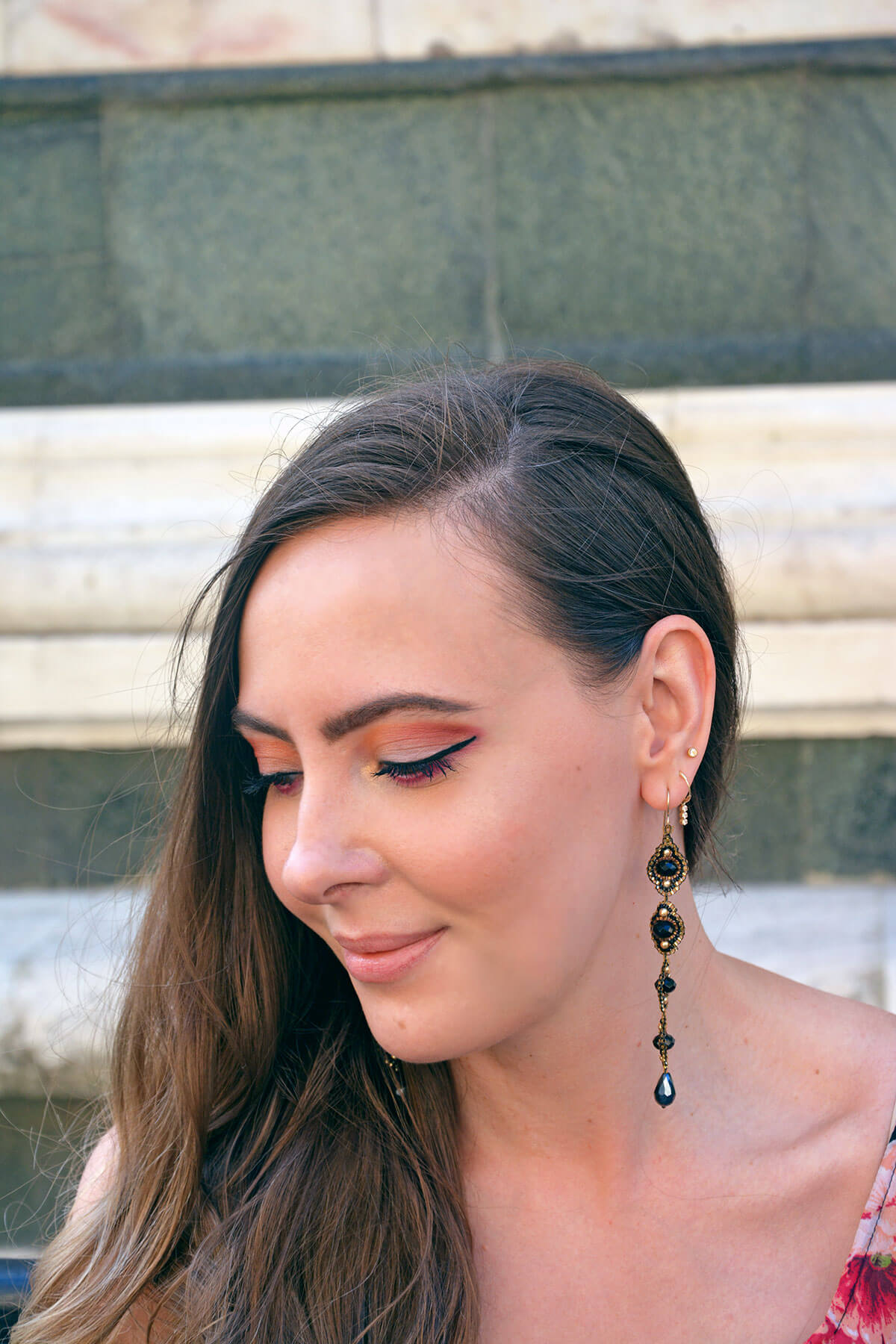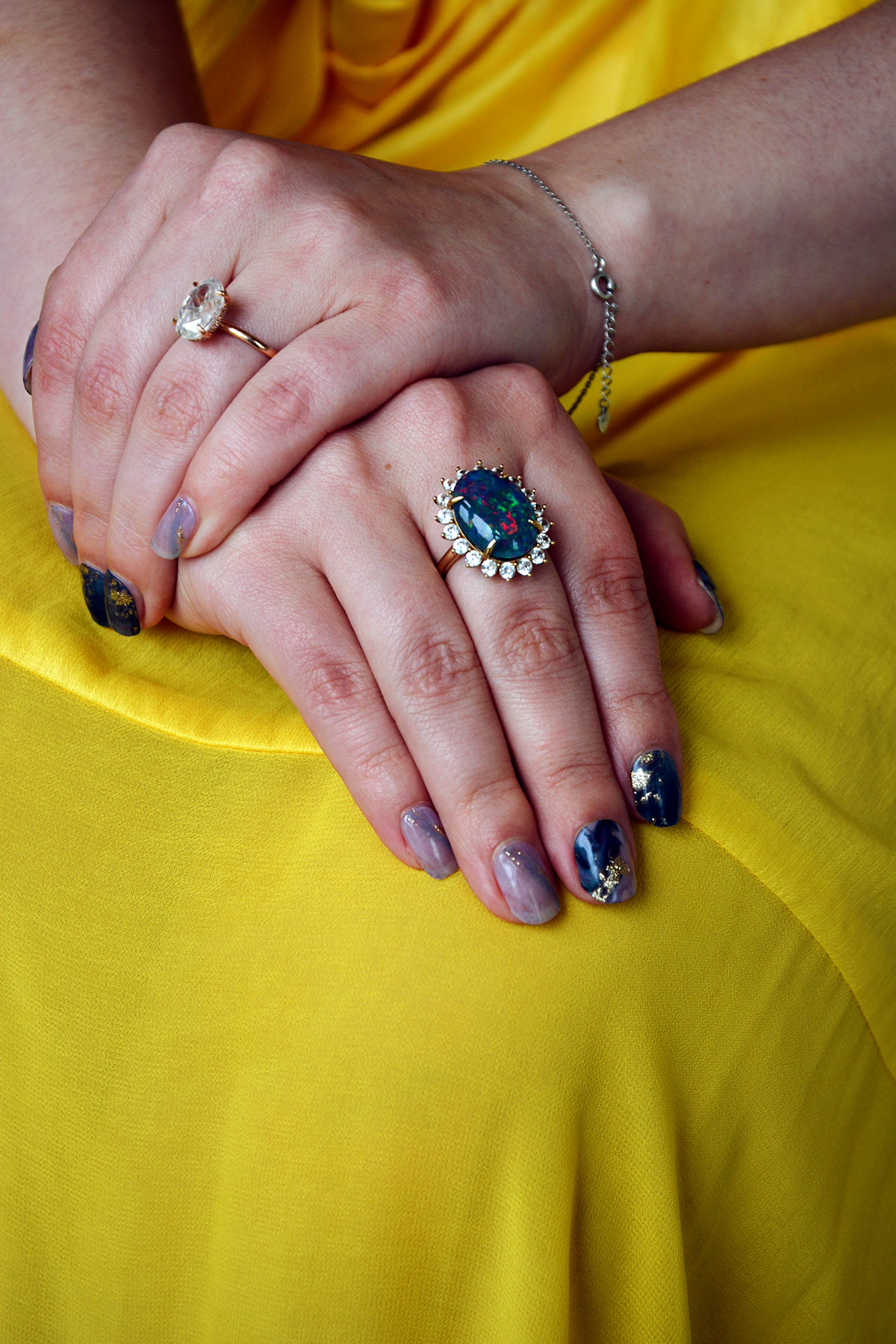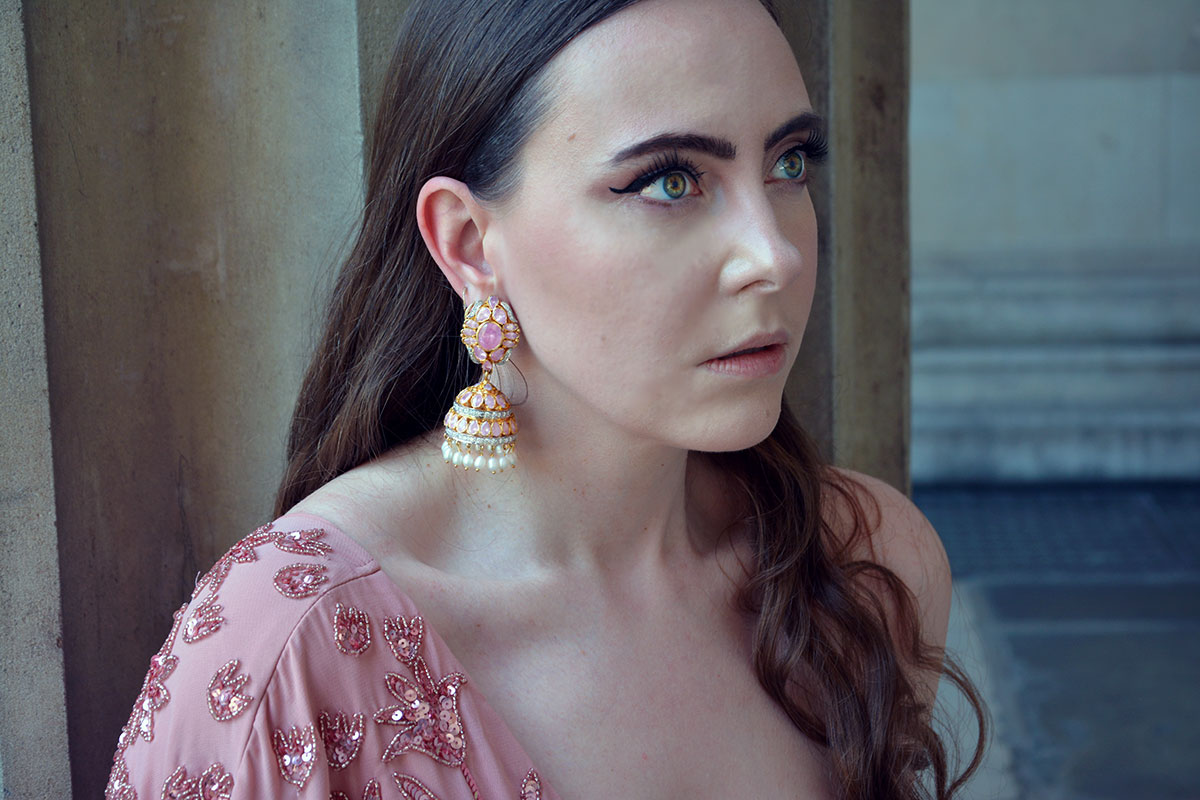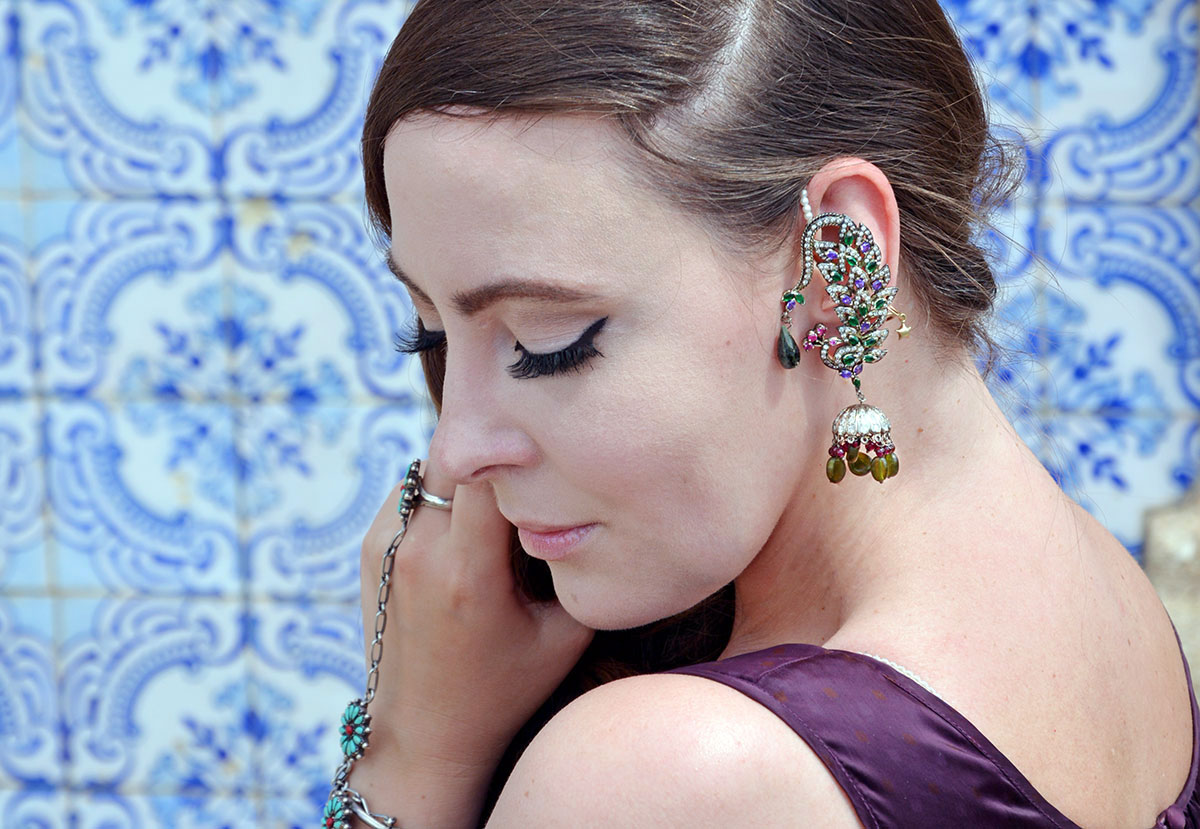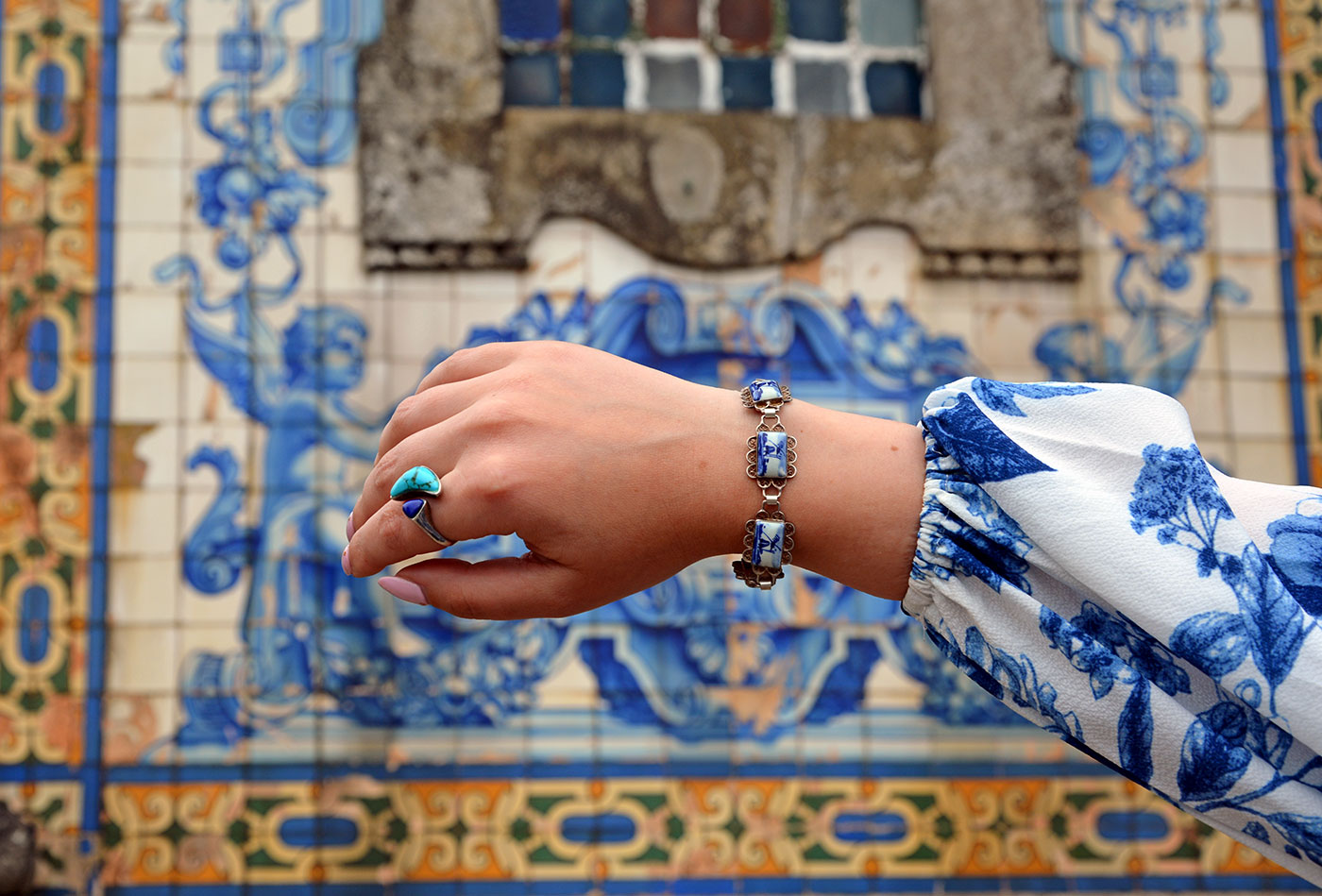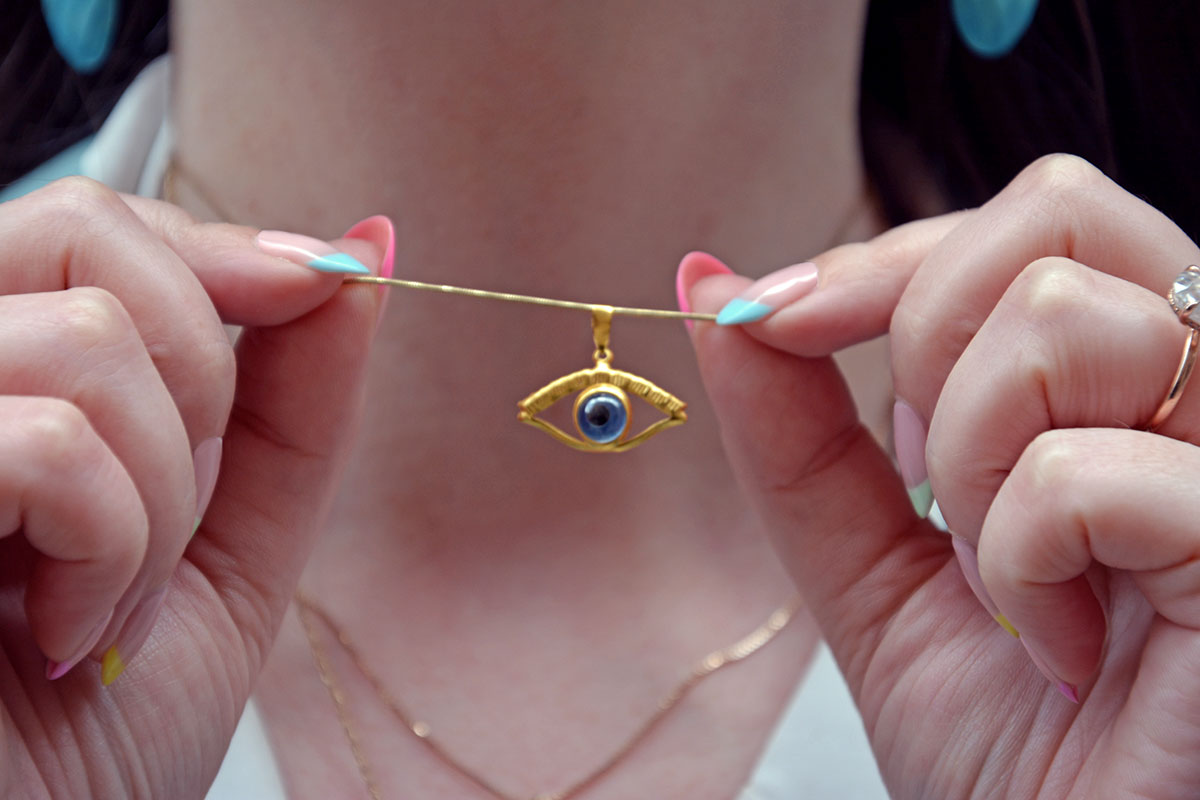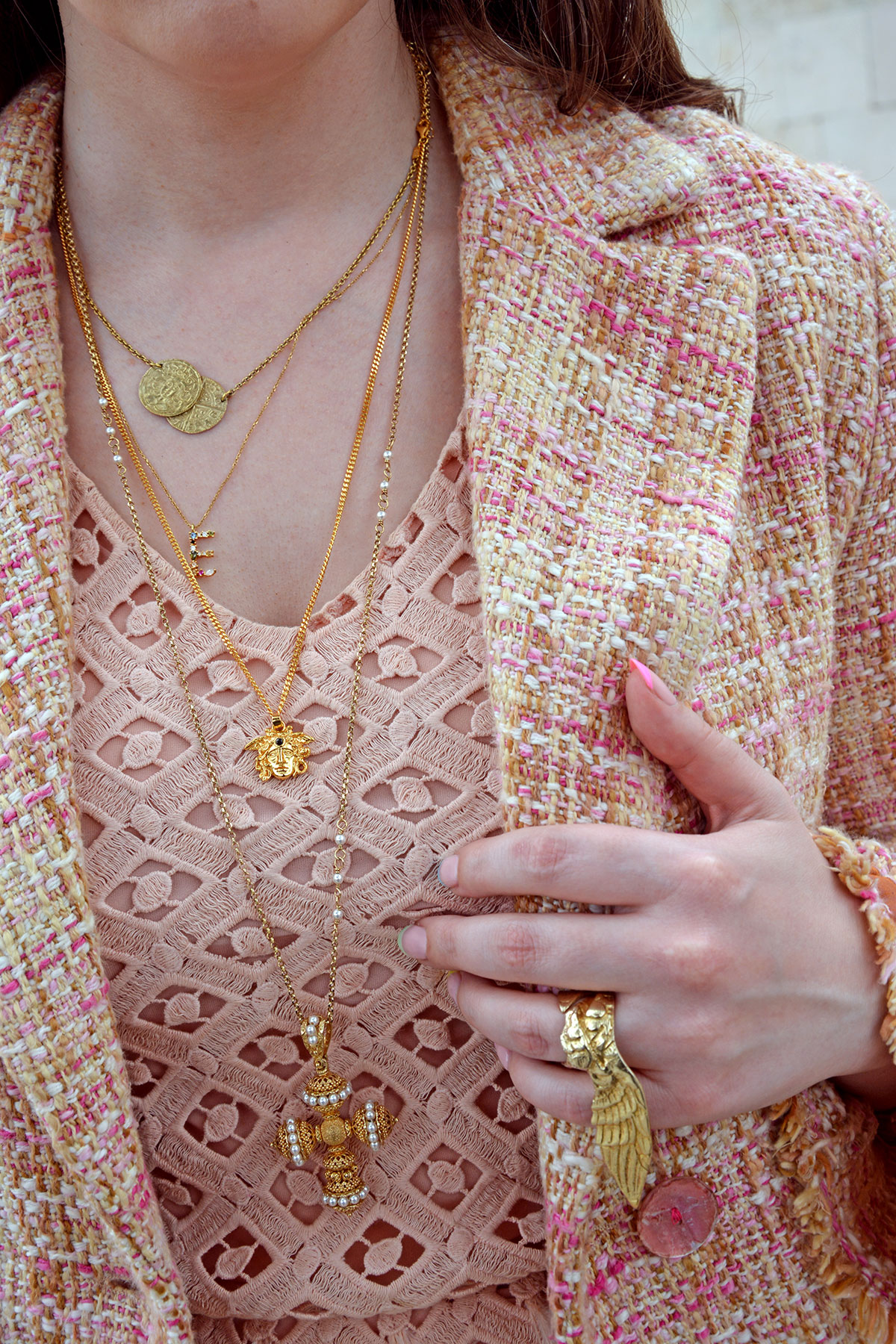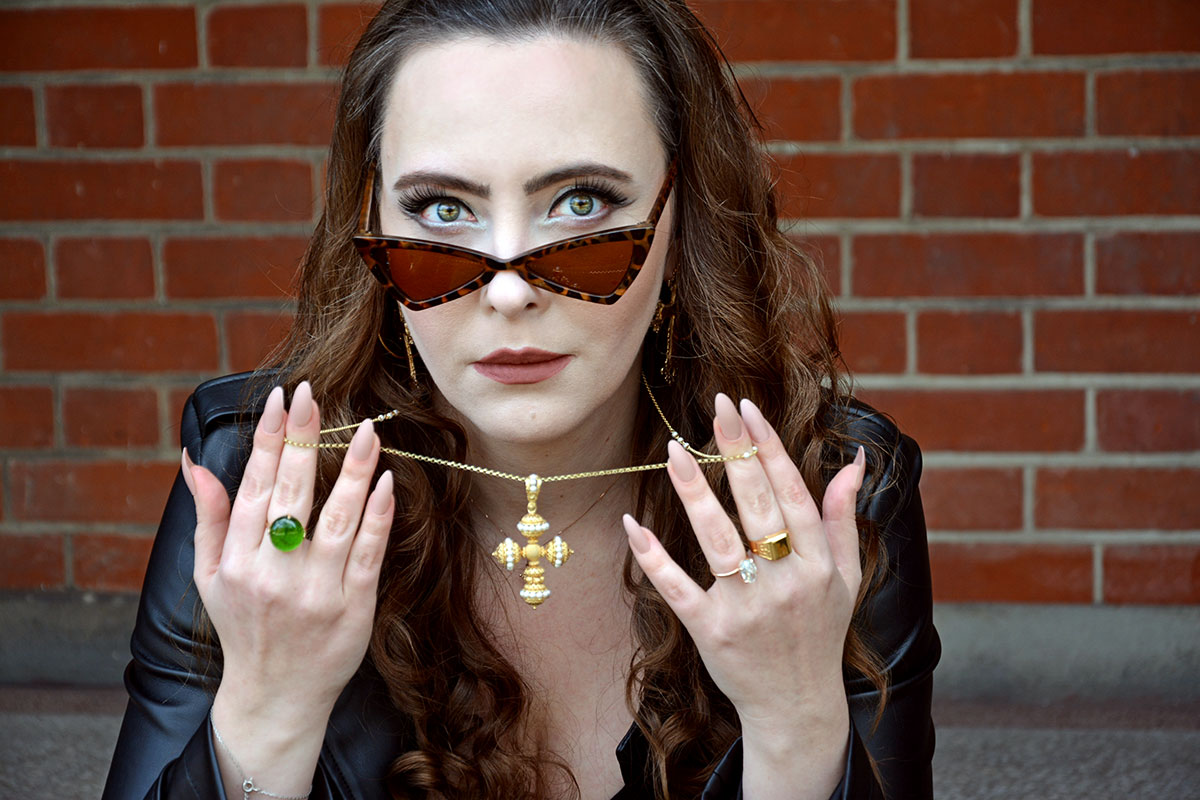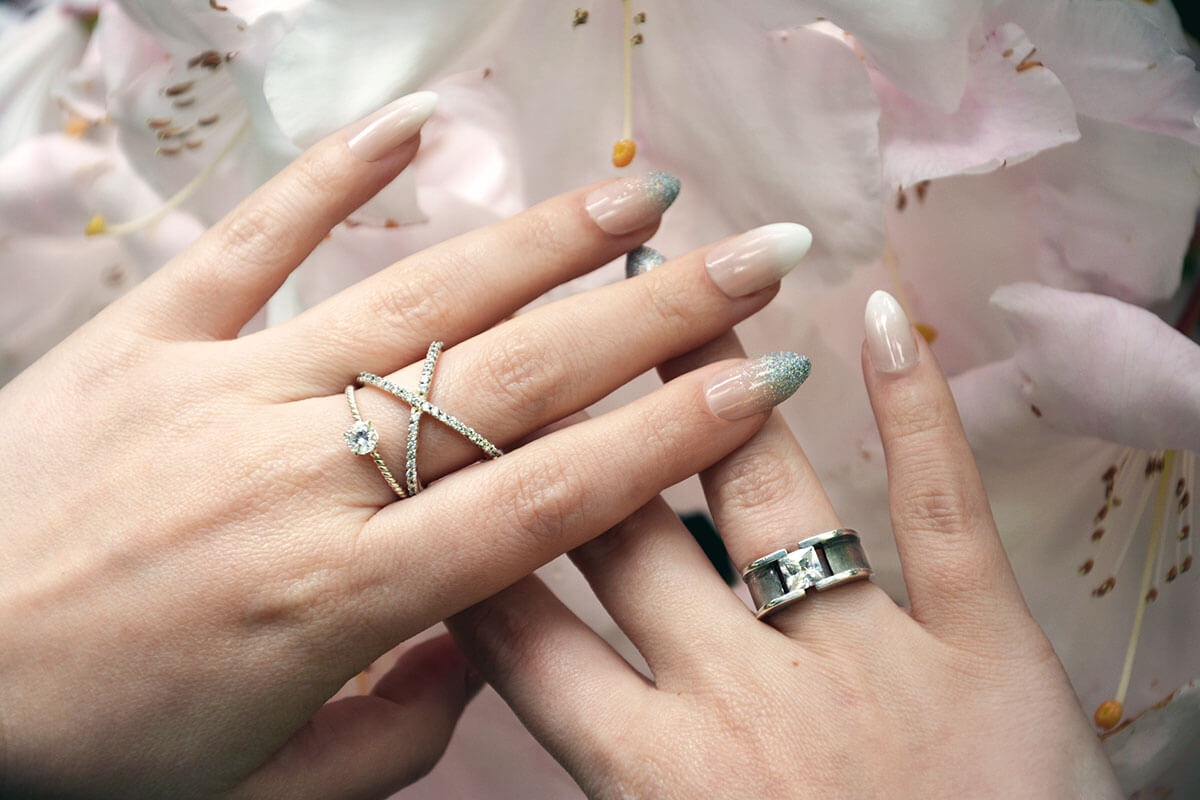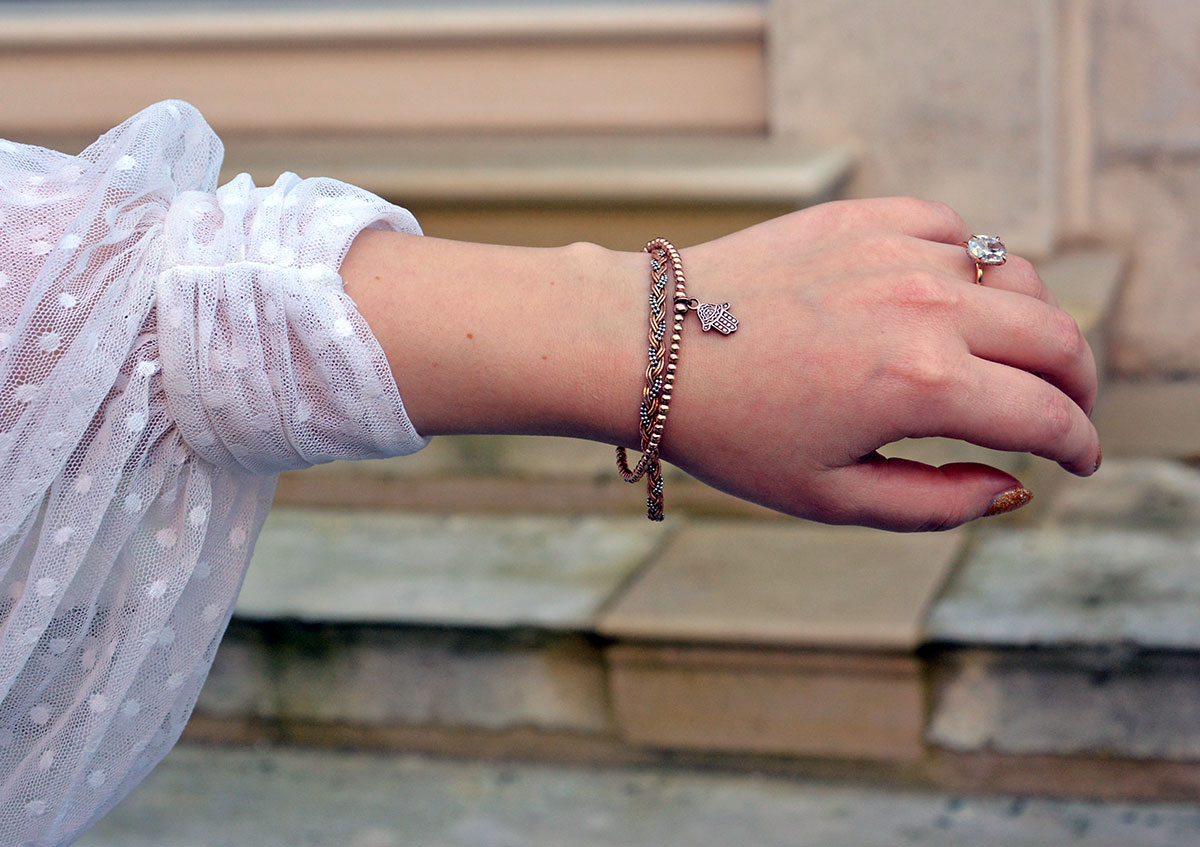Often skirted around, black gemstones have got themselves some mixed reviews. Some see them as cursed, others – desired. It’s time to embrace your inner goth, take a walk on the dark side, and talk about some beautiful black gemstones. Oh, and bust some myths about those curses.
What black gemstones will we look at today? While black spinel, black tourmaline, black diamond, black sapphire, black pearl, black opal, black zircon, black garnet and black jade among others are all honorary mentions, these gems come in other colours, which are often more popular than their black variants. For this reason, in this article we will look at gemstones which are associated predominately with the colour black.
1. Black Gemstones: Jet
What is jet?
To put it simply, jet is what happens when wood decomposes over millions of years under extreme pressure. Pressure not from a boss, but from nature. Imagine a forest that existed millions of years ago dunked under water as time went on. Some of it under saltwater, other parts under freshwater. As carbon from the trees compressed and reacted with the waters, the material fossilised over time, creating jet. Soft jet (which is more prone to breakage under changing temperatures) is the result of carbon compression with freshwater, hard jet – exactly that with saltwater. Oh, and you may have figured this out, but this also makes it a type of coal. If you burn it, it will smell like coal and produce soot too. But please, don’t burn your jet jewellery, go with annoying bills or photos of your enemies instead.
This semi precious gemstone is a mineraloid, and not a mineral. But it’s in good company as other mineraloids include amber, obsidian, shungite, opal, pearl – even water is a mineraloid – find out more about mineraloids here. Jet is found in France, North America, Poland, but probably the most popular place is Whitby, England.
Jet jewellery
Jet jewellery became extremely popular in the mid-19th century in England, specifically due to its colour – black, jet black. Queen Victoria popularised the mourning jewellery (or mourning anything) trend after the death of Prince Albert. Today, jet is a less popular option compared to onyx or obsidian, but antique collectors will always keep jet in their warm embrace as the intricate jewellery pieces from the Victorian era show a unique moment in our history. Find out more about mourning jewellery here.
Contemporary jet jewellery is very accessible, especially with sterling silver. However beyond this, I recommend looking at the work of Jacqueline Cullen, whose Dark Matter and Atomic collections modernise jet and showcase it as a glamorous, modern material, and not something you see on creepy Victorian black and white photographs.
Jet on Mohs Scale: 2.5–4.0. This means that jet is fragile, so should be treated with extra care.
2. Black Gemstones: Obsidian
What is obsidian?
Obsidian is volcanic glass, and like jet above, a mineraloid. Imagine a volcano erupting, spitting out viscous lava which then cools down rapidly with minimal crystal growth, forming our good friend, obsidian.
Because obsidian is a type of glass, it is hard as it is brittle. This means that if it breaks, expect sharp edges. So sharp in fact, that it has been used as material for experimental surgical scalpel blades and piercing tools in modern times. Before that, the ancients used obsidian for extra sharp weapons and hunting tools. It’s not only about sharpness when it comes to obsidian, it can also be very reflective. For this reason it has been used as a mirror throughout history. Aztecs especially appreciated obsidian’s mirror-like qualities. The Aztec deity Tezcatlipoca, whose name translates as “Obsidian Smoking Mirror”, was the god of night, moon and mysticism, and was often depicted with an obsidian mirror by his side. This dark mirror was used for rituals, sorcery and prophecy-telling. While Tezcatlipoca was neither good or evil, this deity symbolises the duality present in all of us: Who do we actually see starring back at us through the black obsidian mirror? We’re not Goody Two-Shoes all the time.
Obsidian jewellery
While obsidian is an overall black gemstone, it also comes in mahogany, which is caused by iron inclusions, and snowflake obsidian, which has a snowflake like pattern. The snowflakes are called spherulites by the way, and they serve as evidence of obsidian transforming from glass to rock. Obsidian is a gemstone, the uses of which go far beyond jewellery thanks to its rich history. Tools, blades, mirrors, audio turntables and gems for healing, obsidian can do it all. In terms of fine jewellery, you will find obsidian most often paired with sterling silver or other semi-precious gems in beadwork. Otherwise, you will find obsidian in artisanal crafts with a boho edge and often a focus on spirituality.
Obsidian on Mohs Scale: 5–6. This means obsidian is harder than jet, but it’s still easily chipped or broken on impact.
3. Black Gemstones: Onyx
What is onyx?
Onyx is a cryptocrystalline, which is a cool word as it has “crypto” in it. But there are no bitcoins here, what cryptocrystalline refers to is texture, the crystals that make up onyx are so tiny, you can only see them via a microscope. Onyx is a type of chalcedony, just like carnelian, who we’ve already spoken about here as well as agate, jasper, sardonyx and chrysoprase, among others. Onyx specifically is differentiated by its bonding of alternating colours – from black and white to almost any hue. Black simply happens to be the most popular, but it not as common as other colours. In fact, nearly all black onyx on the market today has been artificially dyed black. It’s a practice as old as ancient Rome. Speaking of history, onyx has even had a shoutout in the Bible, the Book of Genesis: “And the gold of that land is good: there is bdellium and the onyx stone”. Interestingly, while all gemstones mentioned in this article are predominantly black, onyx is one that isn’t. But as consumers, we see it as black, we want it as black, so we dye it black.
Onyx jewellery
Onyx jewellery is extremely versatile. You can find this gem right next to a diamond, set in gold by the likes of Cartier, or just as easily in sterling silver or in beadwork. Equally, onyx can be found in vintage jewellery as well as experimental, conceptual modern pieces. Bvlgari and Tiffany have some beautiful onyx collections, and for those who want to take a walk on the slightly darker but oh-so romantic side, check out onyx jewellery by Regal Rose.
By the way, there is a ton of superstitions surrounding onyx. Some believed that if one was to touch black onyx, death would follow. Others thought that death was a tad too much, but sadness and sorrow, or even nightmares, were sure to come. In China, only slaves mined onyx as no one else would dare to actually touch it. This meant that no one would buy black onyx in China. But luckily when exported abroad, black onyx was great business with repeat customers, diluting the fears that it was that bad and deadly. Now crystal healers see onyx as a gem that gives strength and boosts self-confidence. No surprises there, considering it overcame such a deadly rep.
Onyx on Mohs Scale: 6.5–7. This means that onyx is the hardest of the black gemstones crew mentioned in this article, but it can still chip or get scratched. Make sure you take it off when doing manual tasks.
4. Black Gemstones: Shungite
What is shungite?
Shungite is almost 98% carbon, so no surprises that it’s black in colour. It is also said to contain trace amounts of fullerenes, which are 60-atom molecules that are often spherical and hollow, a little bit like footballs, but make it chemistry. Studies suggest that fullerenes have anti-microbial properties when activated by light. Don’t worry, it’s now time to take the lab coat off, and put a funky witchdoctor outfit on. Folk medicine loves shungite. Studies have been carried out to test shungite for health benefits including EMF (Electro Magnetic Fields) protection, stress relief, water purification, anti-allergen qualities, fatigue reduction – the list goes on, and the results have been promising so far. However, it’s too early to draw conclusions as the tests are still in their infancy, so the tin foil hat should stay on for a while. Historically, tsar Peter the Great actively advertised the benefits of shungite, opening a shungite powered spa in Karelia as well as insisting the Russian Army use water purified by shungite.
As you probably guessed, this mineraloid comes from Karelia, Russia, more specifically from the village of Shunga. But how did it get there? Usually compounds high in carbon are formed from decayed old woodland (hi again, jet!). But some shungite deposits have been found to be 2 billion years old or more, which places its origin before organic matter evolved on Earth. So… huh? Currently the origin of shungite is considered to be either a meteoritic collision that popped some shungite into our planet; or shungite being a result of evolutionary change in organic matter in sedimentary rocks or in water sources nearby.
Shungite jewellery
Shungite jewellery has been embraced by an interesting source – TV jewellery channels, here’s TJC’s shungite jewellery offering as an example. When it comes to fine jewellery, usually you will find shungite set in sterling silver. Similar to obsidian, shungite is also a gem of choice for artisans, who often layer their pieces with knowledge on shungite’s healing properties. All of this is making me think of a spa break in Karelia, wouldn’t that be a wholesome experience? Plus, the souvenirs are lining up to be pretty cool, an endless choice of shungite jewellery.
Shungite on Mohs Scale: 3.5 – 4.0. This is a fragile gemstone, so make sure you keep it out of harm’s way by not wearing while working with your hands and taking shungite rings off when washing your palms and pinkies.
What is your favourite black gemstone? Do you own any jewellery that contains obsidian, onyx, jet or shungite?


